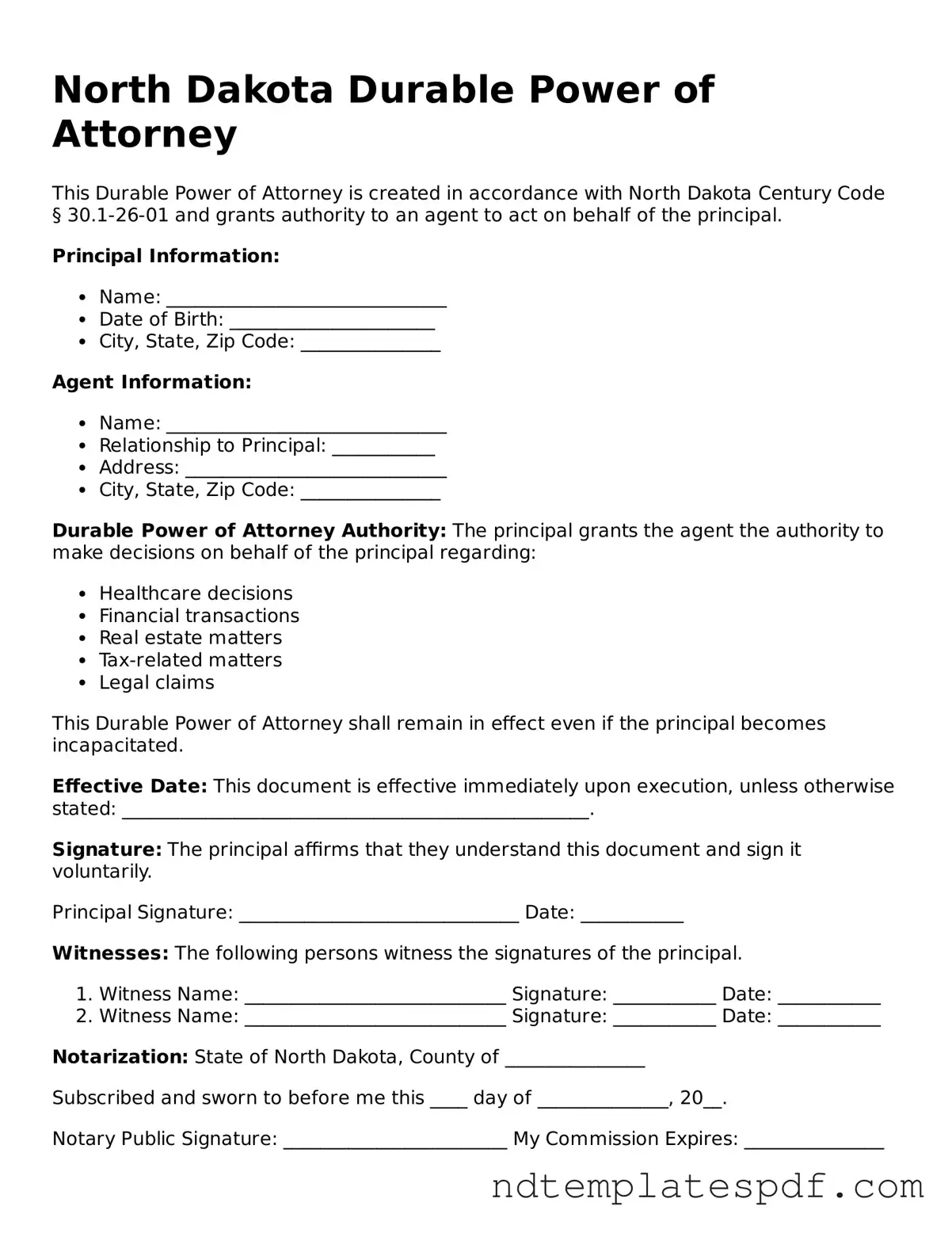Legal North Dakota Durable Power of Attorney Document
A North Dakota Durable Power of Attorney is a legal document that allows an individual, known as the principal, to appoint someone else, referred to as the agent, to make decisions on their behalf. This form remains effective even if the principal becomes incapacitated, ensuring that their wishes are honored. Understanding this document is essential for anyone looking to plan for future health care or financial decisions.
Fill Out Document Now
